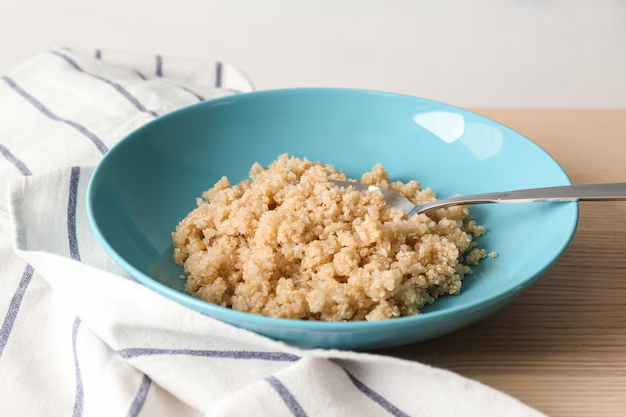Quinoa and Diabetes: A Nutritious Match?
In the world of superfoods, quinoa has gained a reputation for being a healthy grain alternative, often recommended as part of a balanced diet. But is quinoa a good choice for those managing diabetes? The short answer is yes, but with some insightful qualifiers.
Why Quinoa Can Be Beneficial for Diabetics
1. Low Glycemic Index: Quinoa stands out because of its low glycemic index (GI) compared to other grains like white rice or pasta. Foods with a lower GI release glucose more slowly and steadily, which is beneficial for maintaining stable blood sugar levels—an essential factor for diabetics.
2. High in Protein and Fiber: Quinoa is a complete protein, meaning it contains all nine essential amino acids. High protein content can help manage hunger, thereby preventing spikes in blood sugar. Additionally, the fiber in quinoa aids digestion and enhances a feeling of fullness, which can help in weight management—a critical aspect for type 2 diabetics.
3. Rich Nutrient Profile: This pseudo-grain is also packed with important nutrients such as magnesium, iron, and B-vitamins, which play a vital role in blood sugar control and overall health.
Incorporating Quinoa Into a Diabetic Diet
While quinoa is a healthy addition, portion control is key. Enjoying a serving size of about ½ cup of cooked quinoa can be a balanced way to include this nutritious grain in your diet without overloading on carbohydrates.
- Meal Suggestions:
- Add quinoa to salads for an extra protein boost.
- Use it as a base for vegetable stir-fries.
- Incorporate it into soups or stews for additional texture and nutrients.
Exploring Financial Aid for Dietary Needs
Adopting a healthy lifestyle can sometimes feel financially straining, especially when managing a chronic condition like diabetes. However, there are several resources and programs available to support healthier choices without stretching your budget.
Financial Assistance and Educational Resources
🌟 Supplemental Nutrition Assistance Program (SNAP): Provides financial help to buy groceries, ensuring access to healthier food options like quinoa.
💰 Medicaid and Medicare: May cover nutritional counseling and diabetes management programs.
🧑🏫 National Diabetes Prevention Program: Offers lifestyle change programs that can be cost-effective and community-based.
📚 Educational Grants: Explore educational grants for courses on nutrition and healthcare, enhancing your knowledge and skills related to diabetes management.
💳 Healthcare Credit Solutions: Consider using credit solutions designed specifically for medical expenses, enabling you to afford necessary dietary changes gradually.
By integrating quinoa into a balanced diet and utilizing available financial and educational resources, individuals managing diabetes can take actionable steps toward better health and financial stability. Remember, a healthy lifestyle is a powerful component in diabetes management, and with the right support, it's attainable for everyone.
